Since the announcement of the second generation of DJI FPV goggles, I decided that it is time to get one and make the switch from analog to digital FPV. In my DJI FPV Goggles V2 review, I will discuss the specifications, features, compatibility, comfort in use, and what are the major differences compared to the original V1 goggles and cheap boxed 5.8GHz analog FPV headsets.
Back in 2019, DJI made their first intrusion into a growing niche market. Initially, the FPV community received its move with repulsion but, when they saw the outstanding transmission quality of the DJI Air Unit, many started converting their quadcopters from analog to digital FPV. The process was not too complicated but very expensive. DJI digital FPV ecosystem includes 2 must-have parts and an optional one. You will need at least one DJI FPV goggles and a digital VTX (Caddx Vista or DJI Air Unit) + Camera for every of your FPV drones. The DJI FPV transmitter is optional and many opted to use their existing remote controller.
In addition to the high-quality 720P HD digital video transmission, the DJI FPV system provides onboard (in the VTX) and remote recording (in the Goggle). While the DJI Air Unit can record the live feed at 1080p@60 fps or 720p@120 fps footage, the Goggles V2 has ‘only’ 720p@60 fps.
When it comes to first-person flying (FPV), low latency communication is crucial. The DJI FPV goggles V2 has two working modes: Low-latency mode (810p/120fps ≤ 28ms) and High-quality mode (810p/60fps ≤ 40ms). It’s fast enough to do nimble maneuvers with the quadcopter and still be able to react virtually in real-time.
DJI FPV Goggles V2 hands-on review
Disclosure: This review is NOT SPONSORED! The product was ordered and paid for by us. I wrote the article from the perspective of a real shopper who wants to switch from Analog to Digital FPV. However, there are few links included of stores where you can get the DJI FPV goggles V2.
Since DJI does not deliver to my country. I had to order it to an address in the neighboring country. Having myopia, I also ordered a pair of corrective diopter lenses – you have an option for -2, -4, -6, and -8.
Unboxing
DJI provides premium quality from packing to after-sale customer support. The Goggles V2 includes all the accessories (battery, antennas, and power\data cables) you need to use right out of the box. While the face foam padding comes pre-installed, the headband needs to be attached by yourself. There are four dual-band antennas included (2.4G+5.8G). For such a highly-priced product is a pity that they don’t provide a carrying case. The included protective pouch is not too helpful, as you need to remove the antennas in order to fit inside. Many also miss a DC-XT60 battery cable from the box.
At a glance
The DJI FPV Goggle V2 has an excellent build quality and looks like a high-tech gadget from a sci-fi movie. The front plate reminds me of the eyes of a fly. Its design is completely different from any other existing FPV headsets on the market. Roughly measures 202×126×110 mm and weighs 420 grams (without battery). On the front has 4 antennas, 2 TX and 2 RX positioned in the cross.
Instead of an internal battery, it comes with an external 2S 1800 mAh power bank. According to DJI, with a fully charged LIPO pack, you can have up to 110 minutes of working time. The included battery bank has 4 charging level indicator LEDs and a power button. If you need a longer operation time, you can use other high-capacity batteries (11.1-25.2 Volts).
At the bottom, there are two sliders (one for each eye) that allow adjusting interpupillary distance (IPD) within 58-70mm. USB Type-C and micro SD slots are on the bottom-left.
The T-shape headband can be adjusted in width and height, allowing comfortable usage for any head size. It has 7 vent holes (4 outside and 3 inside) and an active fan system to prevent fogging.
Buttons and controls
The DJI FPV Goggles V2 has a total of 4 control buttons (Up/Down channel adjustment, Shutter/Record, and back) and a 5D joystick. The actual channel is displayed on a 5×5 LED array for the flying fellows. Navigating through menus is easy and intuitive. Additionally, there is a tiny ‘Link’ button that allows pairing the goggles with the digital VTX or DJI FPV drone.
Where to buy the DJI FPV V2 Goggles V2?
The first batch of DJI FPV Goggles V2 was sold only in bundle with the V2 transmitter and their first FPV drone. Personally, I opted to order it from DJI, but you can get it as well from many popular RC retailers, including Banggood. While in the US, it is priced at $569, in Europe you can buy it for 689€ ($822).
Optional accessories
- External 5.8GHz RX;
- Crystal HD Patch antennas;
- Antenna storage cover with lens protector;
- Replacement sponge foam padding;
- Protective tempered glass film lens protector;
- Diopter corrective lenses;
- Battery bay with cable organizer;
- DC to XT60 power cable;
- Storage bag.
First usage
First of all, using FPV goggles is a totally different flying experience over the normal smartphone-screen controller that you would use with the Phantom\Mavic drones. It requires many practice hours till you get used to it. In the beginning, it is very frustrating that you can’t switch from FPV to LoS view any time you want or needed. Secondly, this is not a VR goggles, meaning that the drone will not turn following your head movements.
Like all DJI products, the FPV goggles V2 need to be activated before the first usage. This can be done eighter via your mobile phone and DJI Fly APP or through your personal computer and DJI Assistant. In both cases, you need to connect the headset with your device using the included USB Type-C cable.
I wouldn’t say I’m a big fan of the long wire to plug in the power bank. Who wants to keep the battery in his hand or in his pocket while is flying. Having something on the headset that holds the battery would be a much better option.
Eyeglasses, contact lenses, and correction diopter lenses with DJI V2 Goggles
From the perspective of a person who has myopia, looking for the first time into the DJI Goggles V2 was a huge disappointment. I didn’t see too much, the screen was blurry and duplicated (one image for each eye). With my existing box FPV goggles that are using a single 5″ LCD screen, the image is clear without eyeglasses or using diopter lenses. Somehow I was prepared for this kind of issue, so I purchased a pair of corrective lenses that was closest to my myopia level. With the lenses, I finally got to see the screen but still not perfectly clear. In the first seconds, the image was doubled till my brain got used to it.
I have to admit I was impressed by the image quality. There is a huge difference compared to my existing analog goggles. It’s like I’m looking at a huge cinema screen. Also, it provides a more cinematic 16:9 aspect ratio compared to the 4:3 ratio commonly used by 5.8G analog systems.
The faceplate design is compatible with using eyeglasses (of course, if they are not too big), but I found it not very comfortable.
I will test it also with contact lenses in order to see which option provides the best view and comfort to use.
DJI FPV Goggles V2 analog 5.8Ghz mode
As you probably know, the DJI FPV Goggles V2 does not have a built-in analog FPV receiver, but at least it has a video input that can be used for this purpose.
The Hawkeye Little Pilot Master FPV monitor is self-powered, has a built-in 5.8GHz FPV receiver and a video out port. Furthermore, it comes in the box with a compatible AV cable. It is the perfect companion for the DJI FPV goggles V2. You just need to plug in the 3.5mm jack cable and search for your drone’s video signal. Using a self-adhesive velcro, it can be easily attached to the headset. This solution allows your friends to watch what you see through the goggles. Recording works in AV-IN mode as well.
DJI FPV Goggles V2 with Caddx Vista and Nebula Nano camera
BetaFPV already shipped out the Caddx Vista Nebula Nano kit. I will install it on my analog Pavo30 drone when it arrives and finish the last part of the DJI FPV Goggles V2 review.
DJI FPV Goggles V2 versus V1
The first and second-generation DJI FPV goggles have identical designs, shapes, dimensions, and weight. This means that your existing accessories (such as faceplate foam, headband, diopters, and case) from V1 will fit for V2 as well.
In terms of visual experience, both use the same 2″ LCD displays and optics, offering identical FOV (field of view) and resolution of 1440 × 810 pixels for each screen.
In the comparison table below, I highlighted the most important differences between the two generations of DJI FPV goggles.
| DJI FPV Goggles | V1 | V2 |
| Transmission Frequency | Single-Band: 5.8GHz | Dual-Band: 2.4GHz & 5.8GHz |
| Built-in analog 5.8GHz receiver | No | No |
| Live View Mode | 720p@120fps | 810p@120fps |
| Screen Refresh Rate | 120Hz | 144Hz |
| Battery | – | External |
| Input Voltage | up to 17V (2S to 4S) | up to 25.2V (2S to 6S) |
| Video Output Support | No | Via USB Type-C |
| Weight | 420 grams | 420 grams |
| Price at DJI | Discontinued | $569 |

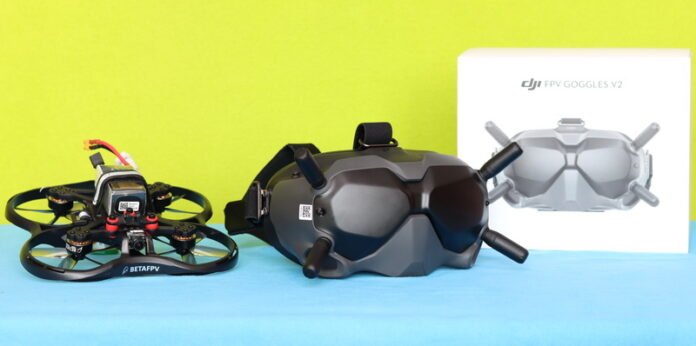
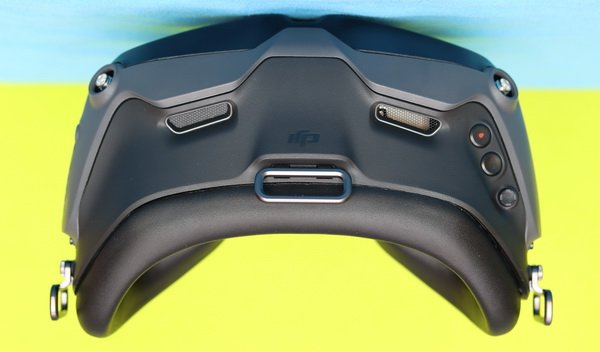
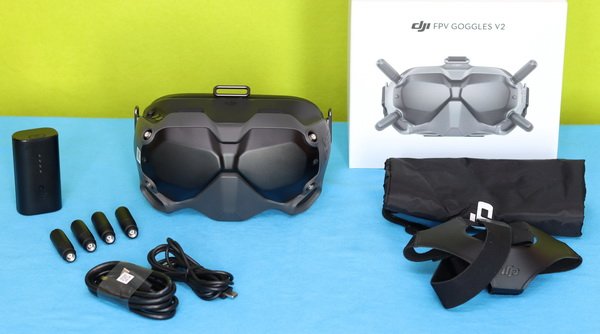
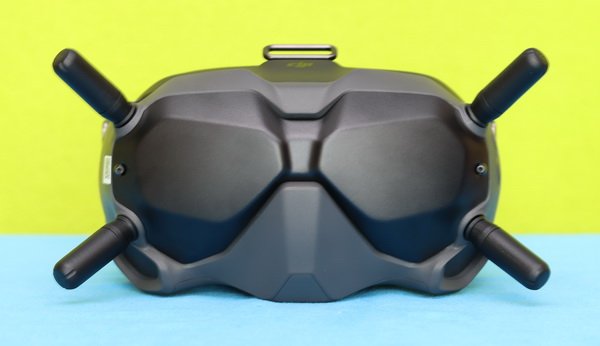
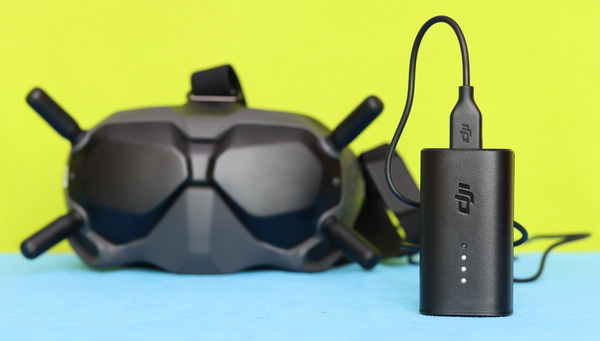
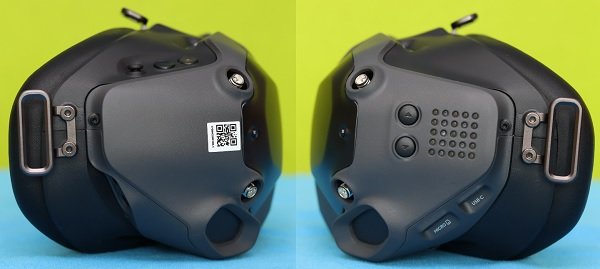
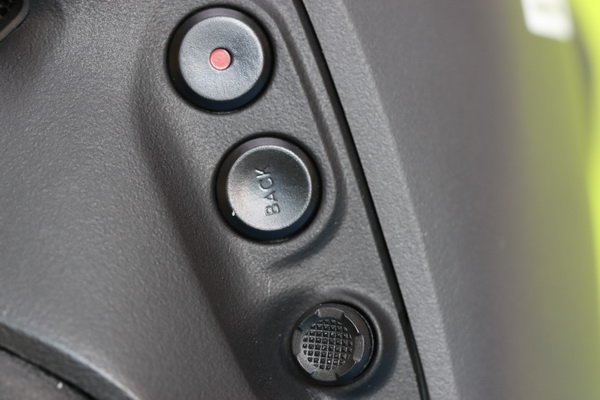
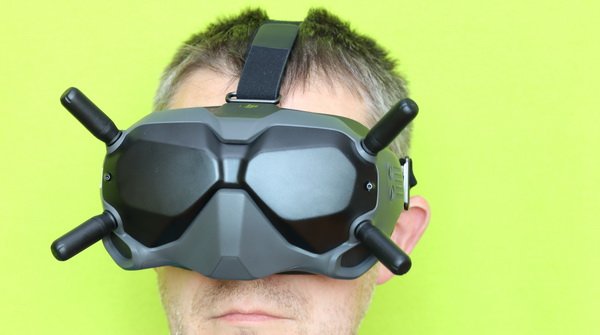
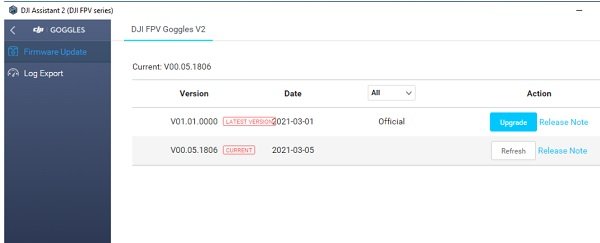
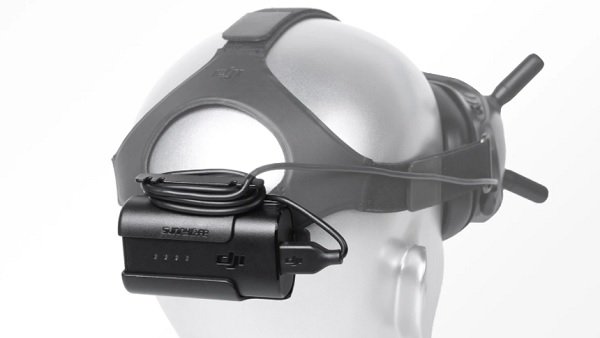
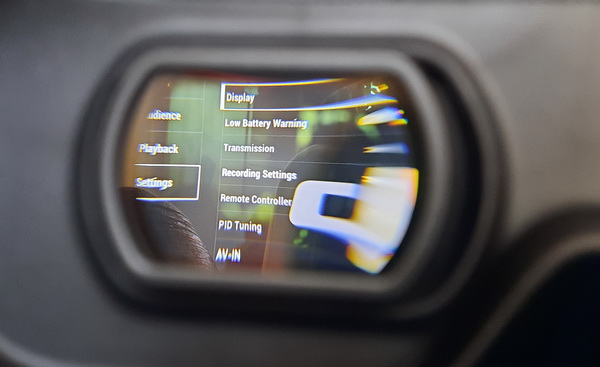
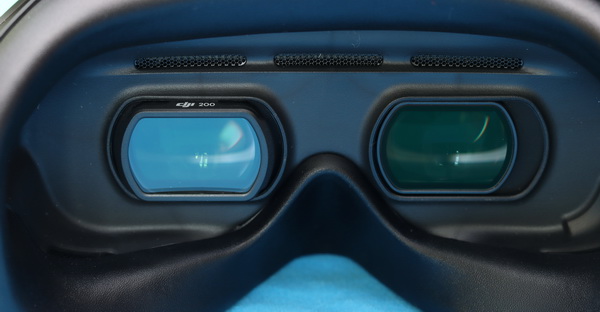
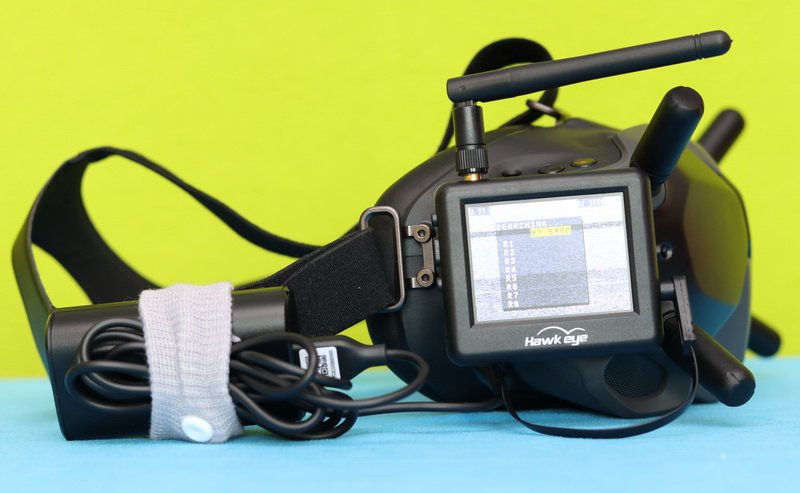
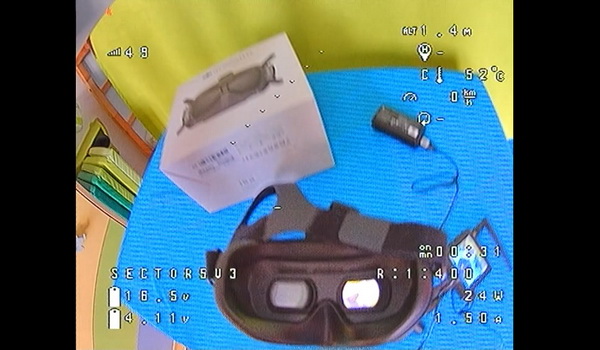
The Goggles V2 is officially DEAD. Never will get O4 support :(
Unfortunately, YES.
The googles v2 is an old model with outdated hardware that can’t support Ocusync 4 transmissions.
Why? DJI should release a o4 compatible firmware!
It’s official: the DJI Goggles V2 will not support the new DJI O4 Air Unit Pro! We can expect to see a lot of V2 goggles available at lower prices soon.
Unfortunately, Yes :(
The V2 served me for many years, I prefer it over the G2 and Integra. It has better image quality and stability with o3.
I just picked up a used pair of V2 goggles from eBay. So far, I’m SUPER happy with this choice! For my DJI drones, I can run patch antennas with stubbies or long-range omni antennas, and I also have the option to use an analog adapter for small whoops. I’ve come to terms with being limited to the O3 Air Units and likely having no compatibility with the O4s.
DJI G V2 are still the best all around goggles IMO. Well worth the 300-350$ !
Hello, do you have any insight regarding the compatibility of the V2 goggles with the new DJI NEO drone?
NO
This is some excellent review! I am very impressed.
Can someone explain to me how to unbrick DJI goggles V2 after firmware upgrade failure. Now shows only black screen
What stubby antennas are guys using with dji goggles v2 for best range?
Thanks
The Goggles V2 can work with the Avata 2????
NO, the Avata V2 has O4 onboard, which is compatible only with the new goggles 3
any update in wtfOS compatibility?
Still no :(
Which goggle would you pick O3 Air Unit?
1. DJI goggles V2
2. Goggles 2 integra
3. Goggles 2
()The Goggles V2 is still the most conformable DJI FPV goggles (IMHO) but the Goggles 2 offer recording with OSD which is a feature that is nice to have.
Any update on recording OSD with Goggles V2 and O3 Air Unit?
Unfortunately, still not working to to record OSD with the DJI Goggles V2.
Hello,
I have green spot on the center of both screens of my DJI Goggles v2.
Anyone know the how to solve this problem? It is out of warranty…
Mine has similar issue. Many believes that the screen can burn from the goggles being exposed to bright sunlight.
Some reported that spot was present on brand new goggles v2 so I do not know what can cause this problem.
The “green spot” is a common issue of the Goggles V2. DJI should admit it and refund the people’s money, even the product is out of warranty!!!
The DJI Goggles V2 has wholly transformed my FPV flying experience. If you’re looking for the ultimate immersive with the highest quality paired with an O3 kit, you will like standing in front of a cinema screen :)
How can I stream my dji goggles V2 to social media?
Is the DJI FPV Goggles V2 work with the MINI 3 Pro or Mini 4 Pro drones?
What is the best after market antennas to increase the Goggles v2’s range? Thanks!
Just got my Goggles v2 and O3 air unit – your review was very helpful and timely
thanks!
Oly
How can you tell the difference between DJI V1 and V2 DJI goggles?
The DJI FPV Goggles V2 is still the most comfortable digital headset!
How you can overlay OSD with FPV Goggles V2 DVR
Had my first flight few minutes ago. fits well on my face, picture quality is superb on DJI GOGGLES V2
Can the DJI Goggles V2 work with none DJI FPV drones?
Yes, it work with any drone that has DJI AIR UNIT, Caddx Vista, or RunCam Link digital VTX
Can these FPV Goggles work with the DJI AVATA?
After more than 4 years on the market, still, the best FPV goggles that you can buy! It is comfortable, has two high-quality LCDs, and has no fogging.
I have a question on the new Goggles 2, regarding the dioptric correction.
I’m using the Goggles V2 ( like in your review) with custom lenses because I’m astigmatic… I’ve seen that the Goggles 2 have on-board dioptric correctors, but that corrects spheric anomalies? This would really helpful for pilots like me.
The DJI FPV Goggles 2 (2022 AVATA edition) will be released today, after the official specs we will know more about dioptric correction
Best upgrades on the dji fpv goggles v2?
Buy the iFlight Crystal HD antenna kit. You’ll get a better range, and the stubbies are smaller than the original antennas.
There is a massive price drop, now is only $429! Never was so cheap!
Is this compatible with the upcoming DJI AVATA drone?
I’m also interested if it will be compatible with the new O3 Air Unit.
With DJI FPV Goggles V2 the Avata drone has the following resolutions:
4K@50/60fps
2.7K@50/60/100/120fps
1080p@50/60/100/120fps
Only now I have noticed that my DJI Goggles have a screen on the side. It shows numbers and letters A sometimes. What do they are mean?
Thank you!
When flying with others that also have DJI Goggles, you can select different channel numbers (1-8)
I had my first acro flight using the dji fpv goggles. The experience was so impressive that I blacked out. Is it normal?
New FPV Goggles is coming from DJI. With OLED display, Occusync 3 and Wifi communication. The leaked images show a smaller and lighter form factor.
I need FPV goggle my budget is about 400$. DJI alternative? I don’t want to invest in something that is near end of life…
Does the DJI FPV Goggles V2 compatible with HDZero and digital Walksnail Avatar FPV systems?
Goggles V2 is out of stock now on DJI. Do you know if they will release the V3???
Supposedly the v2 goggles will work with the new DJI digital vtx.
Do you know if it will be cross-compatibility between the DJI Goggles V2 and the upcoming V3???
I just read that DJI is working on a new OS3 transmission system for FPV drones. In these conditions, it is worth investing in the goggles V2? Or I should wait for the V3?
Hello everyone, I want to build a CINEWHOOP to learn how to fly in full manual mode. Which kit or brand do you suggest to start with? I have the DJI Goggles V2, Which other components do I need?
Thanks for your help!
My DJI goggles (V2) won’t turn on with the original battery, using different cables same nothing :(
Any tips?
The DJI battery itself, powers on, it chargers?
You need the original dji cable and then connect them to goggles. Then short push on power button and after long push the same battery buton till fan starts up.
Visitor Rating: 3 Stars
New Goggles V3 has been confirmed with 1080P OLED screens and WiFi/BT connectivity
Isn’t dangerous for your head? I read that the DJI Goggles V2 has 1W that can cause eye cancer
There is a way to speed up the booting process? I’m using it only with analog input si it does not need to synchronize with digital vtx.
Do you have dead pixels? I left the goggles facing sunlight and now I have two green spots. Still in warranty. Will DJI fix this for free?
Hello guys!
I have a quick question. Which is the best memory card can you recommend for the DJI FPV GOGGLES V2?
The DJI Goggles does not have high requirements regarding the memory card, as they record only 720P.
Any class 10, 32-64GB card should be fine.
Visitor Rating: 5 Stars
best FPV goggles! Amazing image quality!
Can someone tell me cheap digital goggles (cheaper than DJI V2)
Thanks
The DJI GOOGLES V2 is the only of its kind. No other FPV headset is compatible with DJI FPV. The Sharkbyte is the second existing digital system, but the compatible FPV goggles are also expensive
Hi, I’m also looking to upgrade my DJI v2 goggles antennas. My question is will the iFlight Crystal be OK? Does it provide a better range? Many thanks!
There is a way to crack Dji’s 13.3 km limit?
Ho Ho Ho. Santa got me a pair of v2 goggles and couple of caddx vistas. Is there a way to activate the goggles without a DJI FPV drone? Thanks in advance
Nice review! Besides screen sharing on v2 goggles, is there any other differences between the v1 and v2 fpv goggles?
Merry Christmas!
V2 uses two bands (2.4GHZ and 5GHZ) and is the only goggles that can be used with the DJI FPV drone
Visitor Rating: 5 Stars
I got my iFlight Nazgul HD with DJI v2 goggles and mode 2 FPV controller. No battery voltage or anything else in the live video image in the goggles. Is there a magic button for OSD activation?
Just did my 1st real flight with the DJI FPV Goggles. Incredible image quality but you have to learn how to fly digital – it’s different compared to analog
F
Visitor Rating: 3 Stars
How can I add OSD to the videos recorded with the DJI FPV goggles?
Just watch your videos in VLC and that can add the subtitle (srt files) overlay.
Can we use the dji fpv goggles v2 to VR games?
No, you can’t. The DJI FPV Goggles does not have HDMI input.
Does anyone know how to unpair a caddx vista/air unit from the dji goggle v2? Resetting the dji goggles doesn’t work to me…
Visitor Rating: 4 Stars
Can I pair the goggles with a non dji fpv drone (iFlight or Diatone)?
Yes, you can!
Has DJI updated their Air 2S drone yet to work with the DJI GPV Goggles V2?
No, updated on this yet.
Visitor Rating: 5 Stars
Help please, what size of card can you put in v2 dji goggles?
Visitor Rating: 5 Stars
Intend to invest in DJI goggles and Air Unit + camera. Worth it? I’m new to the hobby and looking for my first set of goggles and wondering if it’s worth those 850 euros for goggles and Air Unit
Thanks!
I’m still waiting patiently before I go digital fpv
Does anyone know of a way to connect the Air 2S to the dji fpv goggles v2?
You can’t!
The DJI goggles are magnificent! They are best for FPV!
I had V1’s for a year then V2’s for a couple of months. Both are excellent FPV Goggles
I have the V2 goggles and radio. How easy is it to link these up with a non-DJI FPV drone and also how to do it?
Lorincz
WTF, there’s no more air units for dji fpv goggles sold anywhere??
Can I record the OSD with the v2 goggles ?? if yes you can you tell me how to set it up, please
Unfortunately, the DJI v2 goggles record only clean videos, without the possibility of including telemetry data (OSD)
Does anyone here actually use High-Quality mode on V2? What scenarios would it be good for? I think in FPV, latency is the only thing it counts…
How on earth do you guys store/carry your DJI goggles without taking the antenna off between flight sessions?
No telemetry with my dji goggles v2. Also, I can’t change the power setting from 25mw :(
Did you activate first your Caddx Vista or DJI Air Unit?
Visitor Rating: 4 Stars
Someone, please tell me where I can find this short power cable (30-40cm) to use with the DJI battery? I 3D printed a battery holder for the head strap, and the stock cable is too long
Thanks
Hi, anyone got a coupon code for the DJI FPV GOGGLES V2? About to purchase one…
Welcome to the club! Friendly suggestion don’t leave the antenna on when not using. They are very delicate and will snap off easily!
Visitor Rating: 3 Stars
DJI FPV goggles support audio?
What is the best long-range antenna for goggles v2? Keep losing signal at about half of the advertised range. Any way to boost the signal?
The Kaiju Dual-Band Antennas are the best for DJI FPV Goggles!
Visitor Rating: 4 Stars
Visitor Rating: 5 Stars
Visitor Rating: 5 Stars
Visitor Rating: 4 Stars